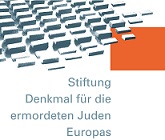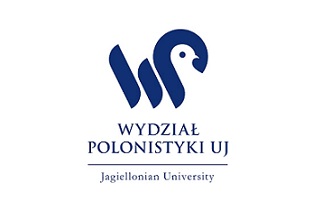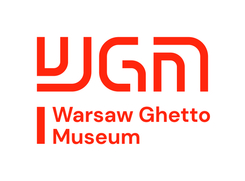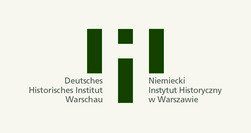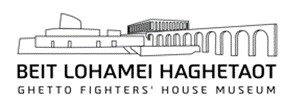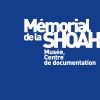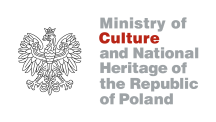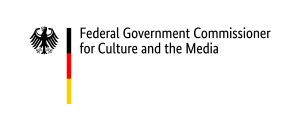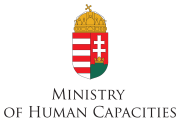The online debate will take place on YouTube on 12 November (Thursday) at 15:00–18:30 CET.
* Please note that all times are indicated according to Warsaw time, i.e. Central European Time (UTC+1:00).
Register to watch the session on ZOOM
KEYNOTE
Mindaugas Kvietkauskas (Minister of Culture of the Republic of Lithuania)
Local Addresses in Holocaust Diaries: Reconstructing the Lifeworlds of Young Jewish Diarists in Vilnius
PANEL PRESENTATIONS
Dorota Głowacka (University of King’s College, Halifax)
The Felicitous Duplicity of Mistranslation in One of the Outtakes from Claude Lanzmann’s Shoah
Roma Sendyka (Jagiellonian University, Krakow), Magda Heydel (Jagiellonian University, Krakow)
Regaining the Voices of Bystanders in Lanzmann’s Shoah
Sue Vice (University of Sheffield), Dominic Williams (Northumbria University, UK)
Local and Symbolic Space in Claude Lanzmann’s Shoah Outtakes
Peter Davies (University of Edinburgh)
Knowledge, Testimony, Translation: Interpreters at the First Frankfurt Auschwitz Trial
VIDEO PRESENTATION
Marta Duch-Dyngosz (Jagiellonian University, Cracow)
In Search of Local Memory of the Holocaust in Poland. The Case of Commemorating Jewish Communities in Small Towns
Chair: Zofia Wóycicka (German Historical Institute, Warsaw)
Commentary: Tomasz Łysak (University of Warsaw)
ABSTRACTS
Mindaugas Kvietkauskas
Local Addresses in Holocaust Diaries: Reconstructing the Lifeworlds of Young Jewish Diarists in Vilnius
The paper will discuss the diaries of Yitskhok Rudashevski (1927–1943) and Matilda Olkinaitė (1922–1941), two young Holocaust authors from Lithuania, whose book publications, prepared by Mindaugas Kvietkauskas, have appeared in Vilnius, their former hometown, in 2018 and 2019. The process of translating and editing of Rudashevski’s and Olkinaitė‘s diaries included thorough archival research of the young authors’ biographies. During the research, the exact local addresses of their apartments and hiding places, previously unknown to Holocaust historians, were identified, and the specific urban socio-cultural milieus of their teen lives were explored. This presentation will be an attempt to answer the question of what is or could be the significance of these newly emerging lieux de mémoire in terms of the Holocaust memory culture which is currently undergoing an intensive development process in Lithuania. According to Aleida Assmann, the central aim of memory policy across Europe should be a dialogical memory culture, which is open to all kinds of experiences, but at the same time supported with common overarching narratives. On one hand, Holocaust diaries written by talented young adults are of major documentary, moral and aesthetic significance and stimulate individual empathy of local and international readers. On the other hand, the texts of both diaries raise acute issues reflecting unresolved conflicts between different memory narratives and interpretations of history. Anti-Soviet vs pro-Soviet opinions of these young authors, negative vs positive imagery of their Lithuanian and Polish neighbours, and rebellious criticisms of their own Jewish community, make these texts challenging and ‘problematic’ memory sites. These challenges of the young adults’ diaries are interpreted as indicators showing whether local Holocaust narrative in Lithuania is already mature enough to accept the dialogical forms of cultural memory.
Dorota Glowacka
The felicitous duplicity of mistranslation in one of the outtakes from Claude Lanzmann’s Shoah
In this presentation, I will examine a sequence of outtakes showing an exchange between a survivor (Srebrnik) and a Polish witness, in which a unique form of co-testimony takes place. It occurs in the intersubjective, relational space that is impossible to map in terms of individual acts of memory, although it escapes the attention of the director and, possibly, also of the participants themselves. Against what I perceive as the director’s effort to control and even suppress testimony in Polish and his contempt for the witnesses’ native tongue, I focus on the use of Polish in the sequence, the interviewees’ peculiar expressions in that language, and the translator’s efforts to navigate this contested linguistic terrain. In contrast to Lanzmann’s coding of the locations of his Polish interviews as a ghastly landscape of death bereft of living memory, the exchanges between the witnesses at this particular site – the former location of the infrastructure of the Chełmno extermination camp - allow us to glimpse a dynamic, nourishing and affirming relation between the language used by the witnesses (including non-verbal clues) and the surrounding landscape, through which the two temporalities, the past and the present, are chiasmatically looped. Overlapping with the memory of trauma, the location in which the act of co-witnessing takes place is thus inseparable from the twisted and intertwined “roots” of the two witnesses’ mother tongue. Drawing attention to corporeal and affective registers of the witnesses’ speech, I underscore the productive tension between the spatial/linguistic proximity between the two witnesses and the untraversable distance between their respective memories of the past. As Tokarska-Bakir and Niziołek have noted, the gaze that Lanzmann casts upon Poland is strongly redolent of colonial attitudes that allow him to present Polish witnesses as backwards, exotic others who inhabit an empty, unchanging, and premodern landscape. As such, he is compelled to refashion his own primary witness’s speech so as to eliminate his testimony in Polish, and perhaps also the traces of Yiddish that reverberate in his recollection. The contempt for subaltern languages and attempts to replace them with a more civilized tongue have always been a part of a colonial mindset. My analysis, therefore, draws attention to complicated, unintended, and, in the end, felicitous testimonial modalities that emerge in the interstices of the interviews that Lanzmann himself had so arrogantly orchestrated.
Magda Heydel – Roma Sendyka
Regaining the Voices of Bystanders in Lanzmann’s Shoah
In this paper we will present the results of an experimental pilot project of regaining the voices of Polish witnesses/bystanders interviewed in Lanzmann’s film. The aim of the project is very simple: to transcribe what Lanzmann’s Polish interviewees actually say in the film and to translate their speech into English. The existing English version of the film – the subtitles – are based on the French texts produced onsite by Lanzmann’s interpreters. As has been already pointed out (Głowacka) the interpreting and hence the English language version, to a large extent ignores what the people actually say as well as reworking their speech, often crude and non-standard in many respects into neutral and clear sentences. This process involves reduction, simplification, clarification and rationalization – all of them highly manipulative procedures (Berman) observable in translation at large. The gist of our argument is that in the case of this material these changes prove to be detrimental to understanding of the testimony given and the positions taken by the bystanders; it also leads to misconstruing the context of the communication within the film and the processes of memory production involved. Ignoring the local in the case of Lanzmann’s documentary results in serious impoverishing of the film’s force as a historical source, it also strongly manipulates the possible interpretations. We claim that to understand the message of the testimonies given in Poland it is necessary to go back to the Polish of the original soundtrack. This seems to be of particular importance for research within the growing field of bystander’s studies. Our presentation will show a section of the results of our team effort aiming to respond in practical terms to the need to access the actual material recorded in Poland. In our study of one scene with Szymon Srebrnik and the villagers in front of the parish church in Chełmno we will show the problems we encountered, the decisions we took, and discuss some practical solutions we applied in order to fully decipher and reproduce the complex network of signification in the speech of the local inhabitants. The analysis will concern social, cultural, class and religious aspects of the scene but its focus will be on the linguistic form of the material. We will show the memory construction processes in language, the dynamics of knowledge and obliviousness, the mechanisms and conditions of individual and group identity creation, signs of trauma and linguistic ways of coping with it. We want to drawa ttention to the fact that recognizing the element of locality complicates the scene of testimonial and – reversely – point to the scope of manipulative omission and simplification involved in the presentation which ignores the local.
Sue Vice – Dominic Williams
Local and Symbolic Space in Claude Lanzmann’s Shoah Outtakes
Claude Lanzmann’s 1985 documentary Shoah is renowned not only for its remarkable eyewitness testimony, but also for the intercutting of this material with footage of ‘present-day geography’ (Olin 1997). In this paper, we will draw on examples from the 220 hours of Shoah’s outtakes, held at the United States Memorial Museum, in order to explore the editing practices that lie behind the cinematic representation of Holocaust spaces. We will argue that Lanzmann’s discarded location footage is a paradigmatic example of material that represents the local, in its focus on specific places, while also tending towards a broader meditation on the processes of genocide. It accomplishes this double movement through the symbolic rather than illustrative use of location footage. This is particularly the case where the footage seems to reveal nothing of the location’s historical role, or was filmed at a geographical distance from past events. This space-making outtake footage takes a wide variety of forms, from which we have chosen the four case studies for our paper. Three consist of the location shots accompanying or substituting for recordings of interviewees: Tadeusz Pankiewicz, proprietor of the Kraków Ghetto Pharmacy, Robert Borden Reams, a wartime US State Department official filmed fishing and golfing in Florida, and the Chełmno gas-van driver Gustav Laabs, who never appears on-screen. The fourth comprises two reels of enigmatic silent footage of the site of Bełżec, where what Lanzmann calls the ‘traces of traces’ are apparent, but only through close and imaginative scrutiny of the former camp’s sandy, forested landscape. Analysing this unedited material offers not just a record of locations, but shows how any future editing could add to the filmic impression given in Shoah of the Holocaust as a ‘place-making’ event (Cole 2016). The absence of this location footage from the finished film reveals Lanzmann’s interests beyond those of Shoah, including questions of rescue and of experiences about which almost no testimony exists. Analysing this unedited material allows us to ‘interject’ our own interpretations (MacDougall 1992), and to see in the outtakes the potential for experimental ways of representing localized Holocaust spaces, and the Holocaust spatially, in cinema.
Peter Davies
The Entanglement of the Holocaust with Human Rights: The Case of Raoul Wallenberg’s Early Reception
The proposed talk raises the question of interpreting and the tension between the individual/local and universal; it will show how interpreters mediated between different modes of knowledge and how the ‘universal’ is also very specific in terms of cultural assumptions and power structures. Where their work is acknowledged at all, courtroom interpreters are often seen as mediators, making mutually comprehensible the statements by the various participants in the courtroom exchanges. Their job is not to interpret at all, but to stay objective; their expertise may be drawn on to explain cultural differences in the understanding of legal concepts, but otherwise codes of professional ethics oblige them to preserve a strict neutrality. There is also a tendency to blame interpreters for problems in communication, accusing them of ‘distortion’ or ‘manipulation’, and making the scapegoats for the conflicted or asymmetrical communication situation. There are significant problems with this view, as studies of courtroom interpreting have shown (e.g., Inghilleri 2012). Depending on the mode of interpreting, it is the interpreter who determines the structure, rhythm, duration and pacing of the interpreted courtroom exchange, and interpreters exercise a significant degree of agency in organising the discourse of witness questioning. The presence of the interpreter influences the framing of testimony even before he or she begins to translate. A convenient fiction of neutrality is necessary for the court to function, but it masks a multitude of occurrences, processes and attitudes that are of vital interest for scholars of Holocaust testimony. This paper considers interpreted courtroom testimonies as communicative exchanges evolving in time and within a complex institutional and discursive context. Although codes of professional ethics require strict neutrality, the power dynamics of the Frankfurt trial mean that there is no neutral position for the interpreters to take up: they occupy an ambiguous position between enabling testimony to take place and be understood, and making witnesses available to the dominant knowledge processes of the court. I ask what other kinds of knowledge are available when our view is shifted away from questions of historical or juridical evidence, and when the interactions between interpreters and other trial participants are analysed in their own right.
Marta Duch-Dyngosz
In search of local memory of the Holocaust in Poland. The case of commemorating Jewish communities in small towns
In recent years in Poland one can observe more and more mnemonic practices and products towards Jewish heritage in the space of Polish cities and towns. The phenomenon of commemorating takes various forms such as: organizing marches of remembrance or festivals of Jewish culture, erecting a monument or introducing changes to the local space by a synagogue renovations. As Michael Meng observed, by the late 1980s., “Jewish sites” were becoming transnational spaces of multiple encounters with the Jewish past involving national politicians, international leaders, tourists, Jewish descendants or residents. Today Jewish heritage is attracting local, national and international attention, engaging different state institutions, grassroots organizations and individuals. At the same time, the phenomenon is anchored in endemic place, particular historical experiences and memory politics. Moreover, the initiatives are undertaken mostly by non-Jews and dedicated to non-Jewish communities. The fact raises questions on the ethics of memory – including issues such as: who is the owner of the Jewish heritage, who has right to use it and interpret it, and what are the motives underlying mnemonic activities. Commemoration has often legitimizing function. It signals that one may remember something and that no stigma is attached to it – at least when it is talked about in a particular way. Therefore, in my paper I will concentrate on an issue of how the Holocaust is remembered and commemorated in small towns where numerous Jewish communities lived before the Holocaust and where the social consequences of the tragic event are still likely to be observed. Whether genuine local memory of the Holocaust even exists? What do we mean by local memory? Whether and on which conditions commemoration may enable a process of coming to terms with difficult past? How does liberal, cosmopolitan, ethical memory of the Holocaust may look like in a particular place? Addressing these issues I will refer to data gathered during my qualitative research on commemoration of Jewish communities conducted in small towns in years 2010-2015 as well as to various collections of oral history.


